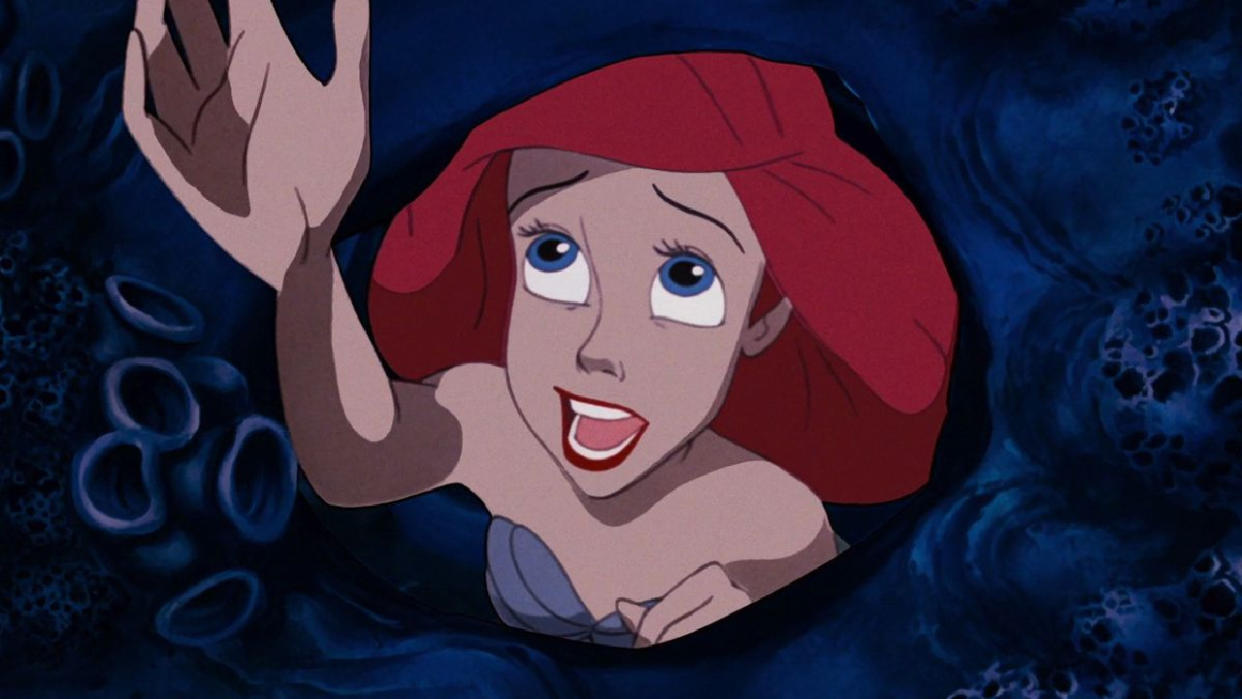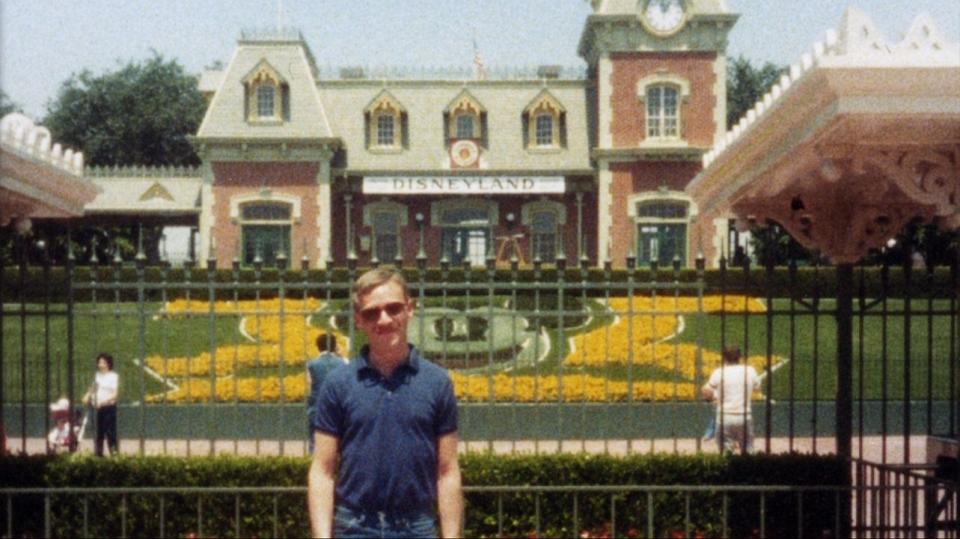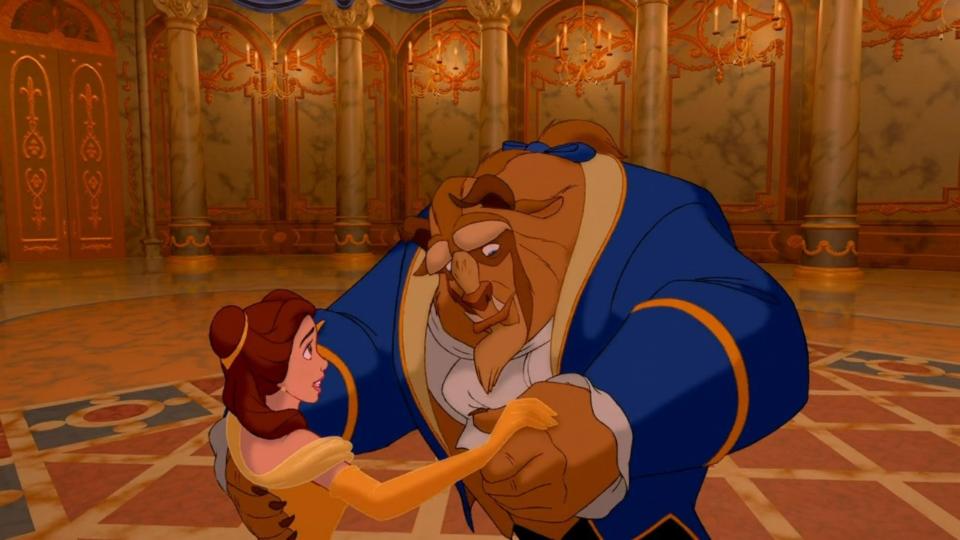Howard Ashman: How The Little Mermaid Songwriter Changed Disney Animation Forever

In the 100 years that The Walt Disney Company has existed, there are a handful of people whose influence has been so important that it changed what the name Disney even meant. Walt and Roy Disney are, of course, on that list, as is Mickey Mouse creator and Imagineer Ub Iwerks. But there’s another name that should be celebrated alongside that of those luminaries: Howard Ashman.
His name was in the news a lot recently. The documentary film, Howard, about his life that’s on Disney+, had been on the list of Disney shows recently removed from the streaming service, which shocked and upset many people, as it was set to happen both on the same day that The Little Mermaid, the film that won him the first of two Oscars, was being released in live action, and on the eve of LGBTQ+ Pride Month, as Ashman may be the single most prominent gay voice in the history of Disney.
Luckily for all of us, Howard can still be viewed on DIsney+, at least for now. As we celebrate Pride, all Disney fans should be aware of just who Ashman was and why he’s so important, not only for the films he helped make but for so many of the films that have come since.

Howard Ashman Before Disney
Ashman began his career as a playwright and songwriter after graduating from college in 1974. He moved to New York and, like many just getting started, would find that his passion for the theater wasn’t paying the bills, at least at first. He had a “day job” at a publishing company, where he would happen to work on a project for The Mickey Mouse Club Scrapbook that would end up bringing him to California and to Disneyland. It was reportedly a favorite project for Ashman because he was a big Disney fan, and had specifically watched The Mickey Mouse Club as a kid.
As the artistic director of the WPA theater in 1977, alongside then-partner Stuart White, Ashman would make the key relationship of his career with composer Alan Menken. The pair would work together to write the music and lyrics for God Bless You, Mr. Rosewater, based on the novel by Kurt Vonnegut, and then on the musical that would really make their names, Little Shop of Horrors.
White and Ashman eventually split up as a couple. Ashman was more focused on work and reportedly wanted a more stable home life, while White apparently liked to party a bit more, and eventually, they realized they were going in different directions. In 1984, Ashman met architect Bill Lauch, and the two would start a relationship that would last for the rest of Ashman’s life.
In 1986, Ashman wrote the book and lyrics, as well as directed, the musical, Smile. The show was, unfortunately, not a hit, but it’s a key piece in the history of his career and his connection to Disney, as it would feature actress Jodi Benson, the future voice of Ariel in The Little Mermaid, singing a song called “Disneyland.”

Howard Ashman Brought The Broadway Musical To Disney
After Smile failed to impress, Ashman came west and worked on the screenplay for the film version of Little Shop of Horrors and began his relationship with Disney writing some of the music for Oliver and Company. Disney Studio head Jeffrey Katzenberg was a fan of his and wanted to work with him more. Of the various projects in development, Ashman was most interested in The Little Mermaid.
It was seen as a return to form for Walt Disney Animation, and while it was the company’s first animated film based on a fairy tale in decades, what made it special wasn’t what it went back to, but what it started.
While most of Disney’s classic animated movies had songs in them, to call them musicals is, honestly, not quite accurate, at least not in the Broadway sense. Classic Disney films like Snow White and the Seven Dwarfs and Cinderella usually had a couple of songs, but Broadway shows always had a lot more, and the ones in the Disney movies weren’t always core to the narrative the way they were on Broadway.
Howard Ashman saw a connection between animation and Broadway that he felt made them obvious partners. Because theater is live, the audience must have a greater suspension of disbelief than with film; we know there are actors on stage and that the sets are often incomplete. By the same token, an animated drawing is equally separated from reality. But, if you can get the audience to believe in these things, and the characters, letting characters burst into song is easy.
Ashman believed that songs should be so integrated into the plot that removing one should make the story incomprehensible. He wouldn’t simply write music, he’d be a producer on the film, which gave him a level of creative control that most songwriters didn’t have in film at that point. He transformed the character of Sebastian, changing his accent from English to Jamaican so that he could justify the inclusion of the calypso song “Under the Sea.” He fought Katzenberg, who wanted to cut "Part of Your World" after a kid got antsy during a test screening.
It's been suggested that The Little Mermaid itself is something of an allegory. Ariel is a woman who wants to be part of a world where she does not feel she belongs. It's not hard to see how a gay man living at the end of the 20th century may have felt very similar. Many who knew him have rejected the idea that any connection between story and reality was intentional, but that doesn't mean it's not there, or that Ashman didn't see it.
He would continue to build animated Disney musicals this way, transforming Beauty and the Beast, and working on a version of Aladdin. Unfortunately, Aladdin would be the last film he would be involved in for Disney, and he would never see a completed version of Beauty and the Beast.
The Death Of Howard Ashman
During the production of The Little Mermaid, Ashman was diagnosed with HIV/AIDS. At first, only those closest to him knew. He would later tell Disney exec Peter Schneider that he didn't want to tell people at the studio, because he was afraid of how the company would react. He loved making their movies, but thought that if family-friendly Disney knew the truth, that a gay man making movies for kids had AIDS, he would be fired.
Disney didn’t fire him. In fact, they moved a production unit from Los Angeles to New York so that Ashman wouldn’t have to travel in order to continue working on Beauty and the Beast and Aladdin. Even then, only those who needed to know were aware of why these accommodations were being made. Many animators felt Ashman was playing the “diva” by insisting that everybody come to him; it was a perspective that he allowed in order to keep the secret. The stigma of AIDS was so strong that it was preferable to letting people know the truth.
Howard Ashman died on March 14, 1991, at the age of 40. It would be another six months before Beauty and the Beast was released in theaters. When “Be Our Guest” won the Oscar for Best Original Song, Ashman’s partner, Bill Lauch, accepted the award on his behalf.

Howard Ashman's Influence Is Still Visible All Over Disney Today
Ashman worked with Disney for barely five years, but his influence on the company has been absolutely immeasurable. The “Disney Decade” of the 1990s would see more animation hits, including not only the three films that he worked on, but the likes of Mulan, Pocahontas, and The Lion King.
While Ashman wasn't part of those other films, they are still musicals in the Broadway tradition that followed in the footsteps of The Little Mermaid. Even today, movies like Moana and the Frozen films are structured like Broadway musicals, with songs written by people with strong Broadway experience.
This has allowed these animated musicals to easily transition to the stage, as well. Starting with Beauty and the Beast, Disney went full circle back to the stage that Ashman loved with Broadway performances. It’s also allowed more of his music to be heard. Only three of the songs he wrote for Aladdin were used in the film, but the Broadway version of Aladdin was able to bring some of those back.
Howard Ashman is one of the great talents to walk through the doors of Walt Disney Studios. If he hadn’t done that, Walt Disney Animation was in real danger of ceasing to exist. Not only did he bring it to new heights, his work has continued to live on in new ways, and inspire and influence all that has come after.